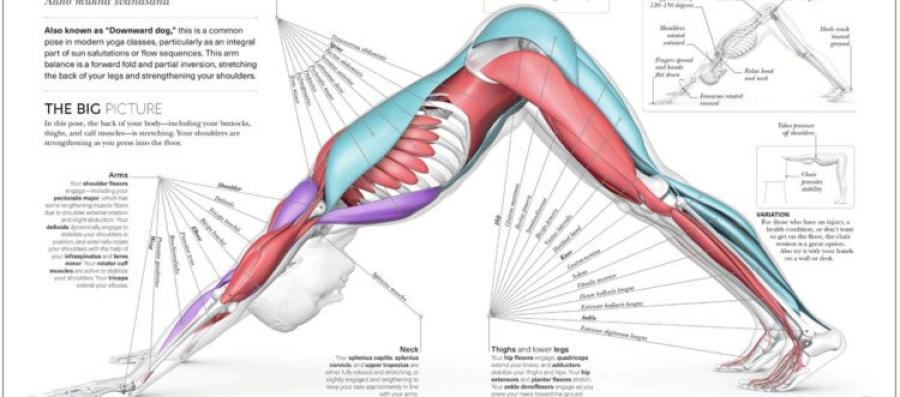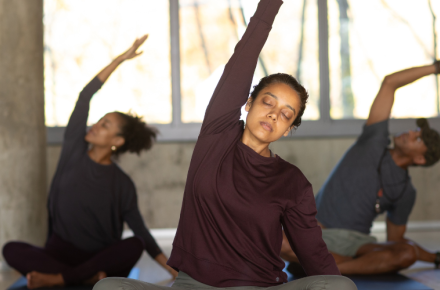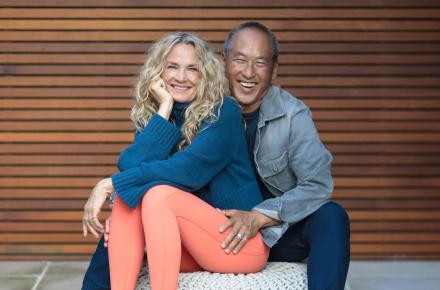Science of Yoga: An Excerpt


As the daughter of a NASA scientist, I was raised to have an analytical mind. A part of me craves method, data, and evidence. I started journaling at the age of seven, carrying my notebooks everywhere. I filled them with charts, graphs, observations, and plans concerning everything from what I ate that day to what to rent at the video store.
I was a curious child, constantly asking, “Why?” My parents would send me to the trusty encyclopedia to look up the answer.
At the same time, I have always been artistic, creative, and interested in spirituality. My notebooks are also filled with elaborate stories, poetry, and colorful drawings.
My undergraduate studies in art led to burnout. Like many people, I came to yoga hoping to relieve stress and anxiety during a difficult time—with the added bonus of staying fit. I didn’t expect that yoga would transform me in an ineffable, seemingly magical way.
When I started practicing, I aimed to make the picture-perfect poses. I slowly realized that yoga isn’t about performing the pose “perfectly,” but instead about being perfectly okay with my body and mind in the moment. Now I know that many of the most profound effects of poses transcend my anatomy of muscles and bones to shape my neurology, psychology, and energetic body. I vividly remember lying on my mat at the end of a yoga class with my eyes wide open, looking impatiently around when I was supposed to be relaxing. I thought “What a waste of time; I have work to do!” With practice, I started to enjoy the way relaxation and meditation practices made me feel.
Now, through reading research, I know that when I meditate, I am literally reshaping my brain. Ultimately, I am impacting every single system of my body, and optimizing function. What more important work could I possibly do?
My shifting mindset drew me to the Himalayas to study yoga, massage, and healing arts. My teacher, Yogi Sivadas, renewed my interest in science. I returned to the US and completed the pre-medicine courses, in pursuit of understanding how and why yoga works in such life-changing ways.
I will never forget the first time I held a human brain in the cadaver lab. The experience was neither antiseptic nor clinical, but deeply spiritual. That three-pound folded gray mysterious mass once both computed mathematics and felt the depths of love. Holding that brain, I knew that the mind-body connection was a key mechanism behind yoga’s benefits.
My new book, Science of Yoga, is the book I wanted to read when I first started practicing yoga. In classes, teachers offer (sometimes conflicting) cues and claims—“Calm your nervous system by elongating your exhales;” “This pose will boost your immunity;” “Align your knee over your ankle”—and I constantly wondered, “Why?”

For the past decade, through workshops, reading research papers, and completing my Master of Science in yoga therapy at Maryland University of Integrative Health, I have continued to fill my notebooks with facts, figures, sketches, and stories. Science of Yoga summarizes the notes I found most fascinating as a yoga student and teacher. This book is intended as neither a comprehensive text on human anatomy and yoga, nor a medical reference book; it is just the beginning. My intention is for this material to spark more curiosity and discussion about the science of yoga, and lead to more inspired yoga practitioners and professionals, more rigorous research, more public policies that encourage yoga in schools and healthcare, and, ultimately, more accessibility and acceptance.
Through my research, scientific principles and evidence have demystified so much of the practice. Surprisingly, this made my transformative experiences feel even more magical. There is just so much more to discover. In the grand scheme of scientific inquiry, yoga research is in its infancy. However, now is an exciting and pivotal point in the field, with a remarkable increase in the quality and quantity of yoga research papers in the past few decades; the evidence supporting yoga’s benefits continues to grow rapidly.
Science can explain the hows and whys of many things, but research studies, no matter how rigorously conducted, cannot compare to your personal, experiential evidence of healing and transformation. Only you can harness the power of yoga through practice.
Find out about programs with Ann Swanson at Kripalu.
Text excerpted and image from Science of Yoga by Ann Swanson, reprinted by permission of DK, a division of Penguin Random House LLC. Copyright © 2019 Ann Swanson & Dorling Kindersley Limited.

















































